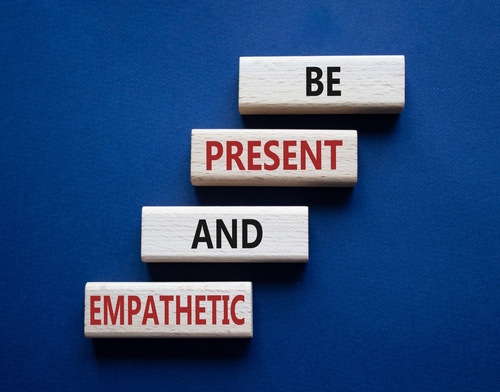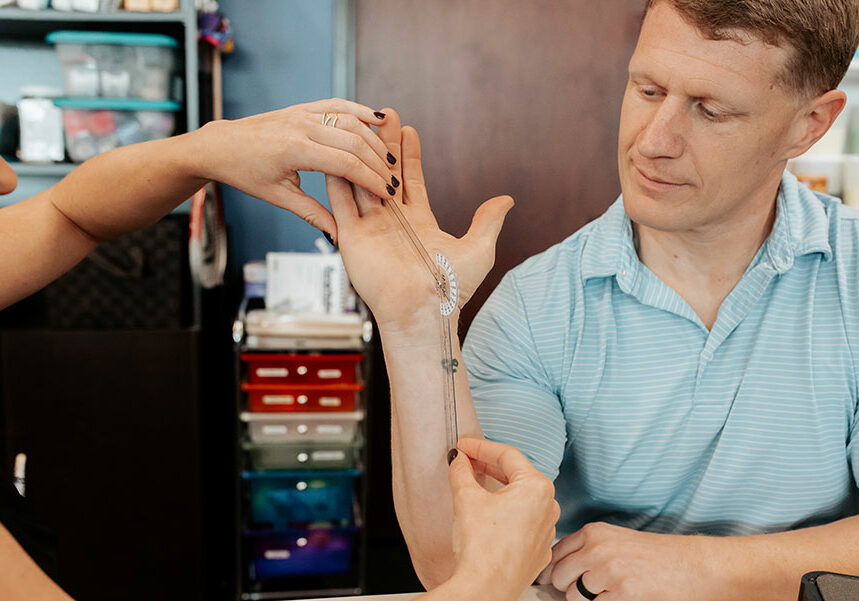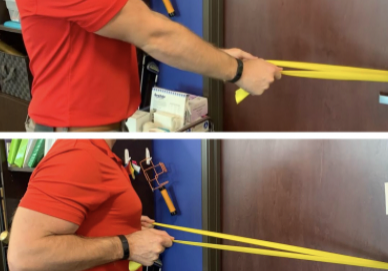Simple but Effective Ways Hand Therapists Address Psychosocial Impacts of Upper Extremity Injuries
Filed under Treatments
Although psychosocial factors are often not formally assessed during an evaluation in those with upper extremity injuries, the therapist often informally assesses these during and after treatment sessions. Sustaining an upper extremity injury can be a physically and emotionally challenging experience. Beyond the physical pain and limitations, these injuries can profoundly impact an individual’s psychosocial well-being. Patients deal with upper extremity conditions that impact their overall function, including long-term chronic pain, acute traumatic injuries, stiffness, range of motion, and strength limitations. Which, as a result, impacts their overall mental health and well-being. This all contributes to the patient’s success in therapy and overall recovery. Below are some simple tips to address these factors with patients.

- Symptom acknowledgment and validation: During the evaluation, patients are asked about what symptoms they are experiencing. When the therapist acknowledges and validates the patient’s condition, concern, and/or problem, this helps to create a positive impact immediately.
- Goal-Oriented Therapy Plans: Collaborating with patients to create personalized rehabilitation plans that include specific goals is essential. This goal-oriented approach fosters a sense of purpose and achievement, boosting patients’ self-esteem and confidence as they progress toward regaining their hand function.
- Social Support Integration: Upper extremity injuries can lead to feelings of isolation. Encourage the patient to involve their loved ones in the rehabilitation process. Fostering a supportive environment can accelerate the healing process and mitigate feelings of loneliness and depression.
- Education and Information: Educating patients about their injuries, the healing process, and the tools available for rehabilitation is an essential part of the therapist’s role. By arming patients with knowledge, therapists empower them to participate in their recovery and make informed decisions.
- Positive Reinforcement and Encouragement: Celebrating small victories by using positive reinforcement and encouragement to boost patients’ self-confidence and self-worth as they make incremental progress in their therapy journey.
- Activity Modification: Upper extremity injuries may require patients to adapt daily activities. By working creatively to find adaptive solutions that enable patients to continue engaging in the activities they enjoy. This fosters a sense of normalcy and prevents feelings of helplessness.

Hand therapists play a pivotal role in helping individuals regain their upper extremity function and rebuild their psychological well-being and overall quality of life through empathetic communication, goal-oriented approaches, education, and a holistic understanding of patients’ emotional needs.
More To Read
How To Do A Fast but Thorough Hand Therapy Assessment
We don’t get a lot of time. Sometimes new patients come in unexpectedly or someone comes at the wrong time and your 1-hour block for an eval is suddenly only 30 minutes. Do you know how to get the most out of your eval time with the patient? Do you know what things are the…
Read MoreIncrease Shoulder Range by Improving Scapulohumeral Rhythm
Scapulohumeral rhythm is often the key component when treating shoulder conditions and the lack of total shoulder range of motion. This may also be a critical component to prevent shoulder conditions during the rehabilitation of other upper extremity conditions such as distal radius fractures, tendon injuries, and elbow injuries. Scapulohumeral rhythm is the rhythm in…
Read MoreEarly Mobilization After Volar Locking Plate Osteosynthesis of Distal Radius Fractures in Older Patients: A Randomized Controlled Trial
By: Rachel Reed Sørensen, T. J., Ohrt-Nissen, S., Ardensø, K. V., Laier, G. H., & Mallet, S. K. (2020). Early Mobilization After Volar Locking Plate Osteosynthesis of Distal Radial Fractures in Older Patients-A Randomized Controlled Trial. The Journal of hand surgery, S0363-5023(20)30276-8. Advance online publication. https://doi.org/10.1016/j.jhsa.2020.05.009 The Skinny: The purpose of this randomized controlled trial was…
Read MoreSign-up to Get Updates Straight to Your Inbox!
Sign up with us and we will send you regular blog posts on everything hand therapy, notices every time we upload new videos and tutorials, along with handout, protocols, and other useful information.





